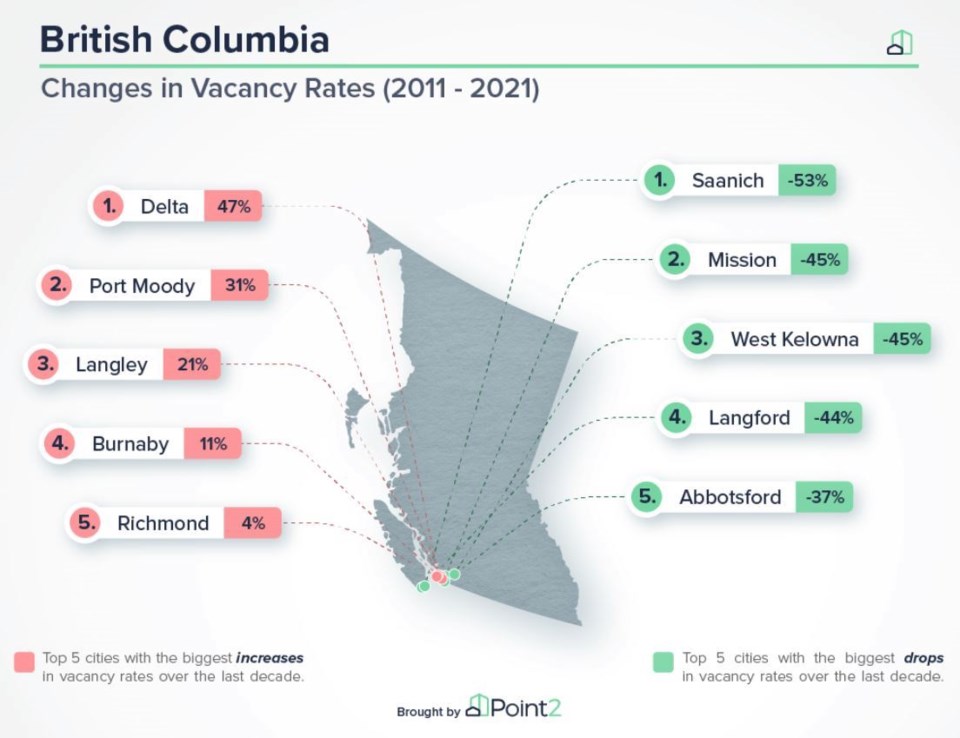Nearly two dozen B.C. cities saw the number of homes left unoccupied fall over the past decade, according to a new report by Point2, an international real estate marketplace.
Dubbed by some as "ghost homes," Canada’s national vacancy rate fell in 2021 for the first time in 20 years, according to the report, which charted the vacancy rates and number of empty homes in 150 Canadian cities over the last 10 years.
According to Point2 analysts, there are currently 1.3 million homes unoccupied by the usual resident in Canada. StatCan defines a “usual resident” as a person who lives at the home most of the time.
The report found that since 2011 vacancy rates had fallen in 87 cities, stayed the same in one and increased in 62. Nationally, St. Albert, Alta., was found to have undergone the largest increase in vacancy rates over the past decade with a 93 per cent surge; Saanich, B.C., meanwhile, had the largest decrease in unoccupied homes coming in at minus 53 per cent.
WHY DOES VACANCY RATE MATTER?
A high vacancy rate indicates more housing stock is being left empty — whether due to renovations, new builds yet to be occupied or owners buying multiple dwellings and leaving some empty at any given time.
That’s led jurisdictions like Vancouver to implement an Empty Homes Tax and propose an Underused Housing Tax.
On the other hand, a low vacancy rates can mean renters struggle to find a place to live, with most available rentals already filled.
METRO VANCOUVER VACANCY RATES HIGHEST IN B.C.
Delta, B.C. saw the most drastic increase in its vacancy rate over the past decade, jumping 47 per cent since 2011. In Port Moody, the municipality saw a 31 per cent increase.
Langley and Burnaby, meanwhile, saw a respective 21 per cent and 11 per cent increase. Richmond saw a smaller four per cent increase.
LOW VACANCY RATES DRIVE SOME TO BRINK OF HOMELESSNESS
In Saanich, where middle-class families have spoken out on their struggle to find a home, the city saw the biggest drop in vacancy rates, falling 53 per cent. Mission and West Kelowna tied at a 45 per cent decrease, and Abbotsford a 37 per cent drop.
The lowest vacancy rates, under 3.4 per cent, occurred in Maple Ridge and Port Coquitlam, the report notes.
Those low vacancy rates have forced at least one desperate Port Coquitlam mom to put a call out on Facebook for help finding an RV for temporary housing.
"I'm meeting up with someone tomorrow regarding temporary housing. I have the community to thank for that," the woman was quoted in a report from the Tri-City News.
And although Vancouver, B.C. is known for its high vacancy rates, analysts found that a nine per cent decrease occurred compared to 10 years ago.
With files from Diane Strandberg



